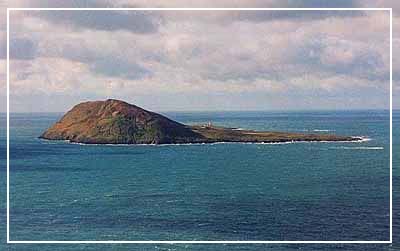Welsh: Ynys Enlli
“Isle of the Currents,” “Tide-race Island”
Bardsey Island, also known as Ynys Enlli in Welsh, is a small island located off the Llŷn Peninsula in Gwynedd, North Wales.

The name “Bardsey Island” might be of Scandinavian origin, where the romantic idea would interpret the name as “Isle of Bards.” Tradition says the bards resorted there since they preferred solitute to the intrusion of foreign invaders.
Bardsey Island has been associated with legends and traditions that connect it to Arthurian legend. According to some traditions, Bardsey Island is identified as one of the possible burial places of King Arthur. The idea of Arthur’s burial on Bardsey may be linked to the island’s spiritual and sacred reputation, making it a fitting location for a legendary king.
Bardsey Island has been referred to as the “Island of 20,000 Saints” due to its association with pilgrimage and its history as the location of a religious community. In Arthurian legend, there are connections beetween Arthur and the Otherworld, and Bardsey’s reputation as a sacred island of saints may have contributed to its role in Arthurian folklore.
Some interpretations of Arthurian legend identify Avalon, the legendary island associated with the healing of King Arthur, with locations in Wales, including Bardsey Island. Avalon is often depicted as a mystical and otherwordly place. It contained an apple tree orchard, perhaps tended by monks in the Arthurian period. Only one tree remains on which a special kind of apple – known as the Bardsey apple – grows. It is a peculiar sort of apple, with the scent of lemon about it.
Here Merlin is said to lie sleeping in a glass fortress, with the Thirteen Treasures of the Island of Britain around him. He also has a throne there, on which to place Arthur when he returns. This is held to be the true throne of the Britons.
Bardsey Island | 0 to the 9th century AD
Celtic and Pre-Christian Periods
Bardsey Island has a long history, and it is likely that it was known and used by Celtic peoples before the arrival of Christianity. The island’s location and natural features may have made it a significant and potentially sacred place in the eyes of the pre-Christian inhabitants.
Early Christian Period | 6th century onward
The Christian history of Bardsey Island begins in the early medieval period. Tradition holds that Saint Cadfan established a religious community on the island in the sixth century. Saint Cadfan is said to have brought monks from Brittany to Bardsey.
Bardsey Abbey | 6th century onward
Bardsey Island became home to Bardsey Abbey, which was founded in the sixth century and played a central role in the island’s Christian life. The island gained a reputation as a holy place and a destination for pilgrims seeking spiritual benefits. It was believed that if someone died on Bardsey Island, they would gain a place in heaven. This belief contributed to the island’s popularity as a pilgrimage site.
Viking Raids | 8th – 9th centuries
Like many coastal areas in the British Isles, Bardsey Island may have been vulnerable to Viking raids during the eighth and ninth centuries. Viking raids and invasions were a significant factor in shaping the history of coastal settlements during this period.
Source
Physical topography in Britain and elsewhere.
Image Credit
Photo: Unknown
